Powering the future: How the Brunswick Nuclear Plant impacts the economy, future growth
For most people, electricity is as simple as flipping a switch.
They don’t give much thought to the process that brought the electricity into their home.
But for employees at the Brunswick Nuclear Plant, the process of making, harnessing, and delivering electricity is top of mind. Located just two miles from Southport, more than 700 people — engineers, scientists, technology specialists, plant operators, and environmental specialists — work together to ensure that residents across Southeastern North Carolina have electricity.
One of those employees, Eric Caison, has been working at the plant for more than 20 years. When he tells people where he works, their first reaction is one of surprise.
“There’s a lot of people here who have moved here, and they don’t even know we’re here,” he explained. “Then you tell them what you do, and they’re, at first, shocked and say, ‘Oh, I didn’t realize there was a nuclear plant there.’”
Longtime Brunswick County residents like Caison are not only aware of the nuclear plant, they depend on it. The plant has supported families and provided an injection to the local economy. But as technology evolves, many wonder how much longer the plant will operate, and what will happen if it were to be decommissioned.
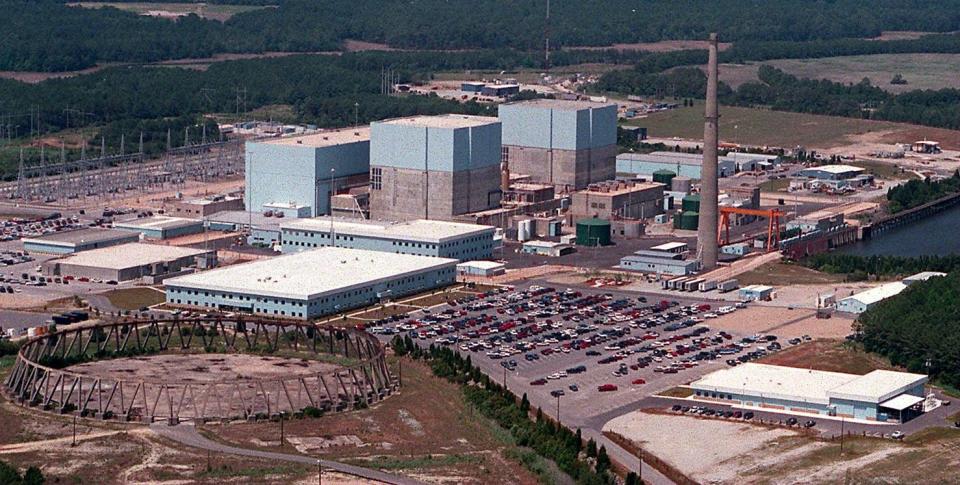
Plant's history
In 1970, crews broke ground on the Brunswick Nuclear Plant. According to information posted in the Brunswick Energy and Education Center, fill dirt was moved from what is now the lagoon on Dutchman Creek, and the reactor vessel arrived at the site on a barge from the Cape Fear River.
Construction lasted several years with crews building the structures from concrete and steel rebar. The plant was constructed with 50 million pounds of steel — the same amount needed to build 253 miles of railroad track. The structures were designed with the area’s hazardous weather conditions in mind.
Located less than five miles away from the nuclear plant is Military Ocean Terminal Sunny Point (MOTSU), a munitions port and one of the largest military terminals in the world. While some question the decision to build the two so close together, Karen Williams, spokeswoman for the Duke Energy’s Brunswick Nuclear Plant, explained that the presence of the munitions depot was considered.
“Sunny Point was here before the plant was built, so this plant was built knowing it is sitting next to an Army Depot,” she said.
The two boiling water reactors are contained inside concrete structures with five-foot-thick steel-reinforced walls.
“They’re built to withstand pretty much anything you could throw at them,” Williams said.
According to a study analyzing safety and dangers for MOTSU, Williams said, the impact to the Brunswick Nuclear Plant would be having the windows blown out in the buildings, but the containment units would be unscathed.
Because the Brunswick Nuclear Plant does not burn fuel, it does not produce carbon dioxide or emit greenhouse gases and is considered carbon-free electricity. To produce electricity, the plant uses uranium in a process called nuclear fission to heat water and generate steam.
The steam created from the heat travels to turbines that are attached to a generator. Once there, the steam spins the turbines, producing electricity and then flows across metal tubes, which condense the steam allowing it to be reused in the nuclear reactor’s cooling system. The river water flows down a cooling canal and is discharged into the Atlantic Ocean near Caswell Beach.
The cooling canal frequently has a foam on the top of it, and Williams explained this is a result of the Cape Fear River’s brackish water and is like the foam found on the ocean near beaches.
The Brunswick Nuclear Plant began commercial operation with the first of the two reactors going online in 1975. The second reactor began operating in 1977. Next year, the plant will mark its 50th year of operation.

Providing jobs for Brunswick residents
Like most college graduates, Eric Caison began looking for a job once he had his degree in hand.
Caison, who graduated from the University of North Carolina Wilmington in 2002, had a definite preference when it came to location.
“I’m a longtime resident of Brunswick County,” he explained. “I’ve lived here most of my life, and I knew when I graduated college, I wanted to stay here.”
The environmental studies major had a few places in mind, and all were located between Brunswick County and Wilmington. An internship during his senior year of college helped him narrow his focus. The position was at what was then Global Nuclear Fuel, which later became G.E. Hitachi Nuclear Energy. It was there Caison began to learn about nuclear power and developed “a fascination with it.”
Then a bit later, he had the opportunity to visit the Brunswick Nuclear Plant’s former education center — a blue metal building, which was destroyed when Hurricane Florence hit the area in 2018. The visit made an impression.
“That sparked some more interest in this place, and I put it high on my list of potentials,” he said.
Caison landed a job at the Brunswick Nuclear Plant — his top choice — and this July will mark his 21st year there.
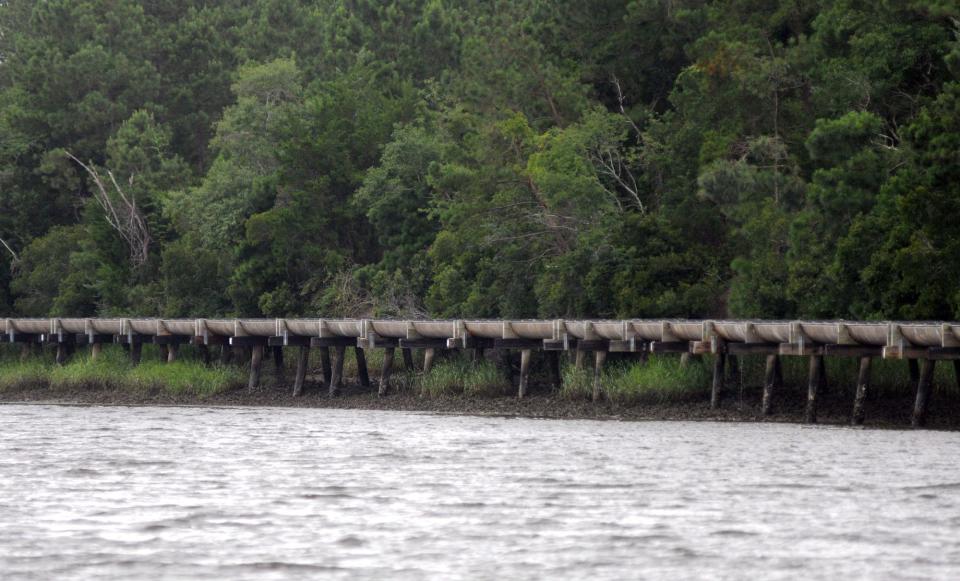
Environmental impact
While Caison’s focus has always been on the environment, his job responsibilities have changed a bit from when he first started. Currently, he’s as an environmental health and safety professional working with the plant’s environmental programs and is responsible for ensuring the plant is complying with the Clean Air Act, Clean Water Act, and Endangered Species Act.
“Not just that but going above and beyond to make sure that we’re not just in compliance, but that we’re being good environmental stewards and that we’re putting controls in place to prevent any environmental impact in Brunswick County,” Caison explained.
Some of the efforts the plant has made to protect the environment include installing a screen to prevent large fish and marine life from entering the plant’s intake canal and installing the “slide for life,” which allows them to return smaller marine life back to the Cape Fear River.
“We’ve got about five species of sea turtles that are in our particular area, and we put a great deal of effort and a great deal of money into keeping them out of our intake canal because we want to protect those endangered species," Caison explained.
Occasionally, usually during lunar high tides, a sea turtle may find its way into the canal. The plant monitors those canals, and when a sea turtle is found, it is captured, measured, tagged and released in cooperation with the N.C. Wildlife Resources Commission.
“We also voluntarily participate in a marine sea turtle tagging program that’s administered by the Archie Carr Center for Sea Turtle Research out of the University of Florida,” Caison said.
He explained this involves attaching transponder tags that transmit information, allowing researchers to track the turtle’s migration patterns and habits.
While Caison doesn’t participate in capturing or tagging the turtles — those tasks are left to the employees with that special training — he does go along with the crew when a turtle is released. He explained in early January 2024, a green sea turtle was captured in the plant’s intake canal — a rare occurrence due to the colder temperatures. He recalled these instances usually occur during the summer when the beaches are full of people.
“There’s certainly a lot of interest when we’re carrying a live turtle over to the island and letting it go off the beach,” he said. “People want to ask a lot of questions, and we’re happy to oblige that.”
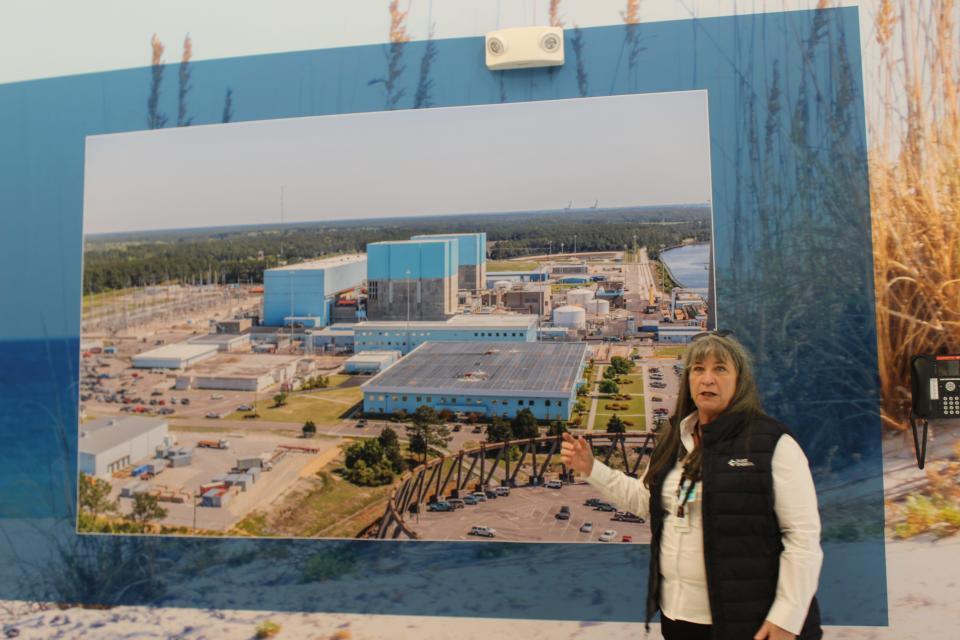
An economic 'shot-in-the-arm'
In addition to providing energy to residents, the plant also gives the area a boost economically, employing more than 700 people and bringing in additional contract workers during the annual refueling outages.
During the outages, one of the reactors is shut down and spent fuel is removed and replaced with fresh fuel. Maintenance and upgrades are done during refueling, and additional personnel is required. Outages happen during the winter and early spring, which is the off-season for tourism. Outage workers rent local accommodations and patronize local restaurants and businesses during their stay.
Karen Sphar, executive vice president of the Southport-Oak Island Chamber of Commerce, said the business community always wants to know when the outage is happening.
“It really provides that economy shot in the arm for our local retailers, per se, and we are just so delighted they do it when they do,” Sphar said. “It’s definitely something merchants count on now."
The plant is also the largest taxpayer in Brunswick County, paying $5.8 million in property taxes, and employees make significant contributions to the community by volunteering with nonprofit organizations and supporting community projects by supporting local charities.
“Just this past summer, the company sponsored the Matthew’s Ministry Fishing Tournament,” Caison said. “So not only Duke (Energy), but a lot of the contractors that we employ here at Duke supported that.”
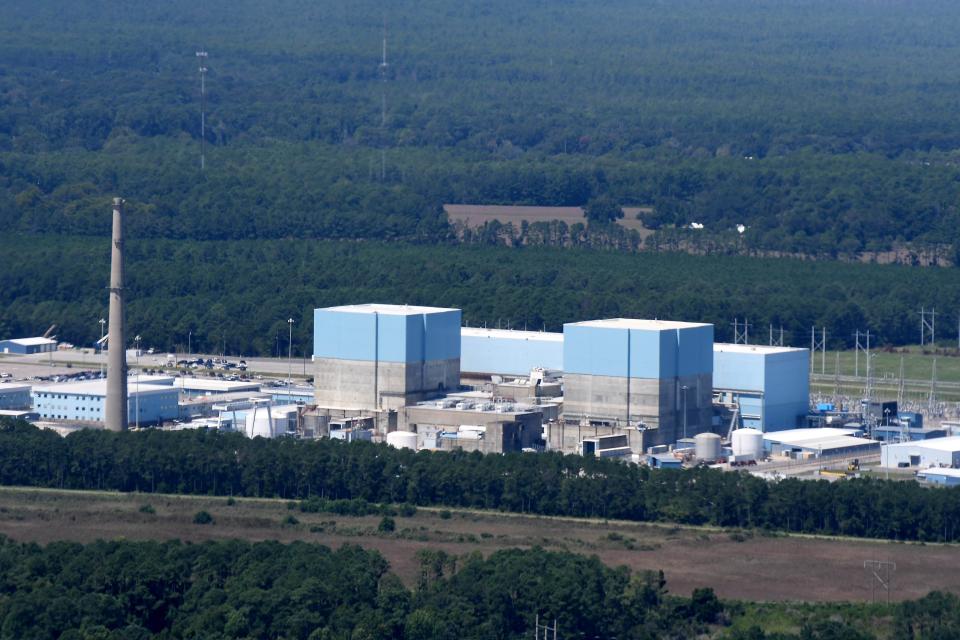
Powering growth
When the plant was built in the 1970s, the population in Southeastern North Carolina was nowhere near what it is today. According to data from the N.C. State Demographer’s Office, the population of Brunswick County alone was estimated to be 24,223 in April 1970, and as of July 1, 2022, that number had risen to 152,515.
Despite the boom, Williams said, the plant can accommodate the increased demand for power. Currently, the Brunswick Nuclear Plant supplies enough electricity to power between 1 and 1.5 million homes, and officials are looking at how they can accommodate more growth.
Factors the company considers include what’s already established, the anticipated growth rate, changes in behavior that could affect increases in power load, such as the use of electric cars, and what plants need to be retired. The company then uses this data to determine where it needs to add new power plants. Duke Energy also factors in its carbon goals, which include transitioning from coal plants to nuclear and renewable energy to eliminate carbon emissions by 2050.
But when it comes generating enough power for the Wilmington area, Williams said they are “in good shape” and are currently focusing on other areas of the state and region.
Duke Energy operates both the Brunswick Nuclear Plant and the Sutton Power Plant located in New Hanover County, both of which supply power for the region. Williams said lines from the Brunswick Nuclear Plant run to several different areas, including Whiteville, Castle Hayne, and Lumberton. She explained that it’s also possible to send and receive power from other sources if necessary.
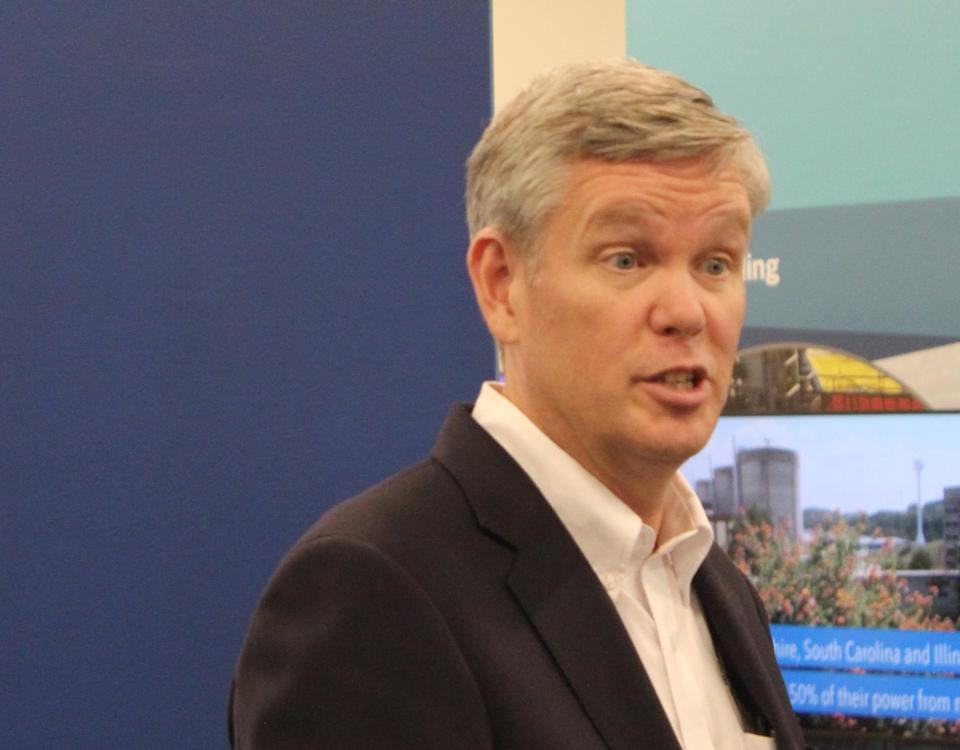
Looking toward the future
Nuclear plants don’t have infinite life spans. All commercially owned nuclear power plants are licensed to operate by the Nuclear Regulatory Commission. After the initial license is granted, it may be amended, renewed, transferred, or modified.
The Brunswick Nuclear Plant’s Unit 2 was the first to be operational, with its initial license issued on December 27, 1974, and renewed on June 26, 2006. The license for Unit 2 expires on December 27, 2034. The initial license for Unit 1 at the Brunswick Nuclear Plant was issued in 1976, renewed in 2006, and expires in 2036.
Recently, Nuclear Regulatory Chairman Chris Hansen visited the Brunswick Nuclear Plant where he toured the facilities. Part of the visit included talking with plant executives about operations and plans for the future. He also spoke with control-room operators about the modernization efforts that had been incorporated and saw some of the flex equipment Duke Energy has incorporated to prevent incidents like the one that happened after an earthquake and tsunami hit the nuclear power plant in Fukushima, Japan, in 2011.
“I came away very impressed with both the management of the plant, as well as our on-site inspectors and the work they do every day,” Hansen said.
Williams said while the plant has hosted Nuclear Regulatory Commissioners at the facility, it was the first time the chairman had visited the plant.
“It’s awesome to have him and for him to know first-hand and to have seen our plant first-hand,” she said.
While the Nuclear Regulatory Commission plays an integral role in plant licensing, it also oversees the decommissioning process that occurs when a plant’s license is terminated. Decommissioning involves decontaminating a facility to reduce any residual radioactivity, dismantling structures, removing contaminated materials and transporting them to appropriate disposal facilities.
Caison said one unique thing about the nuclear industry is that information is “shared openly from utility to utility,” and he’s heard “horror stories” about what happens to an area’s economy when a nuclear plant is decommissioned.
“That economic impact on a community is really sad,” he said. “I hope that’s never the case here. I hope we will remain here for a very, very long time.”
Williams said the plant is currently working on a request to extend its licenses. As far as the plant’s future beyond that, that is more difficult to predict.
“Forecasting things that far in the future is pretty much impossible, but there are limiting factors. Ultimately, there will come a point when this plant will have to be decommissioned,” she said.
The eventual decommissioning of the plant is already paid for, and plans are already in place. But for now, they are focused on the more immediate future.
“The first step for this area is to extend the license of the Brunswick plant,” she said. “We’ll ask the NRC to extend that another 20 years so that we can continue to operate the plant into the mid-2050s.”
To learn more about the Brunswick Nuclear Plant, visit their Education Center.
Renee Spencer is the community engagement editor at the StarNews. Reach her at rspencer@starnewsonline.com.
This article originally appeared on Wilmington StarNews: Brunswick Nuclear Plant near Southport, NC, prepares to celebrate 50 years

